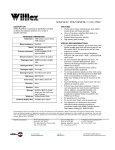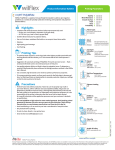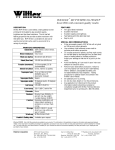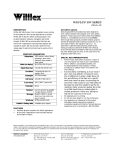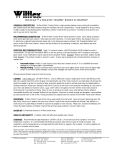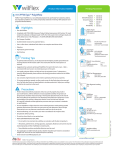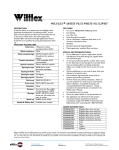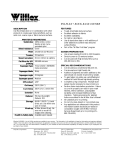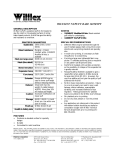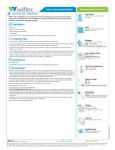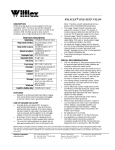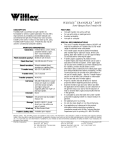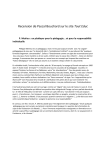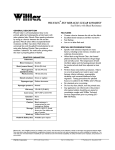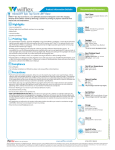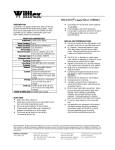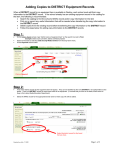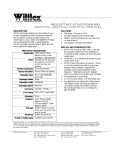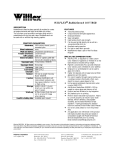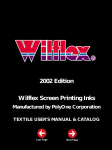Transcript
WILFLEX ® POLYWHITE TM #11117HT DESCRIPTION Wilflex PolyWhite is a plastisol ink specifically formulated to address dye migration problems on a variety of specialty substrates. PRINTER'S PARAMETERS Substrates 100% cotton, cotton blends, 100% polyester Bleed resistance Mesh Tension (newtons) Excellent 60-130 threads/in (24-51 threads/cm) 15-20 acceptable, 25-35 recommended Stencil emulsion Direct, indirect & capillary Squeegee type 60-80 durometer, straight edge Squeegee blade Hard, square Squeegee angle Low angle Squeegee speed Hard flood, slow speed Gel temp Cure temp 200 F (94 C) 320 F (160 C) entire film Extender None Reducer None Storage 65-90 F (18-32 C). Avoid direct sun. Use within one year of receipt. Wilflex Screen Wash Wash-up Health & Safety data Available upon request FEATURES • Works well on heavy, colored aprons, dark athletic meshes & caps with heavy dye loads. • Use as a first-down, underbase flash white or an overprint stand-alone white. • Excellent bleed resistance, odorless • High opacity, good coverage SPECIAL RECOMMENDATIONS • To optimize bleed resistance, set the dryer belt at the highest possible speed while still ensuring that the ink film reaches 320 F. This ensures that the ink's heat exposure is minimal. • Suggestions for automatic printing of PolyWhite: First print 130 mesh screen -- flash -- second print 86 mesh screen. • On rare occasions, dye migration may occur. To determine a material's bleed potential, please reference the testing procedures outlined in the Wilflex User's Manual. • Use consistent, high tensioned screen mesh to optimize performance properties. • To increase production speeds, use finer mesh counts for the flash plate to decrease gel time. Set flash dwell times on heated pallets to simulate production. Adjust your settings so that the ink is just dry to the touch. • Avoid overflashing, as it can result in poor inter-coat adhesion of overprint colors. • Perform fusion tests before production. Failure to cure ink properly can result in poor wash fastness, inferior adhesion, unacceptable durability, and increased likelihood of dye migration. Testing procedures for plastisol fusion are outlined in the Wilflex User's Manual. • Stir plastisols prior to printing. • Do not dry clean, bleach, iron the printed area. • Any application not referenced in this product information bulletin should be pre-tested or consultation sought with Wilflex Technical Services Dept. before printing (US - 800-735-4353). Not all PolyOne products are available in every country. The information in this publication is based on information and experience believed reliable. Since many factors may affect processing for an application, processors must carry out their own tests and experiments to confirm suitability for intended use. You must make your own determination of suitability for your intended use and environmental acceptability, the safety and health of your employees, and purchasers of your product. Effective Date: 02/22/2001 PolyOne Corporation 8155 Cobb Center Drive Kennesaw, GA 30152 Tel: 800-326-0226; 770-590-3500 Fax: 678-290-2749 Unit 12, Orbital One Green St. Green Rd. Dartford, Kent DA1 1QG UK Tel: (+44) 01322 277778 77 Parkhurst Dr, Knoxfield 3180 Victoria, Australia Tel: (+61) 3 9887 1522
